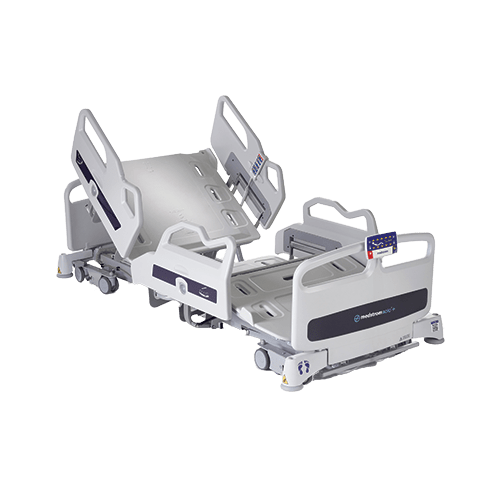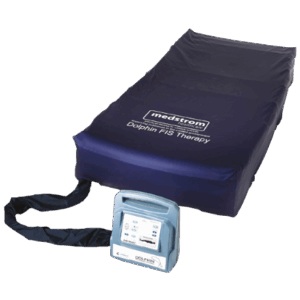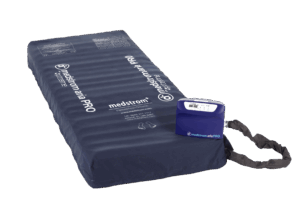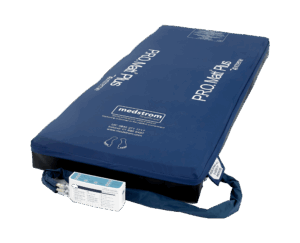
Part 2: The Science of Surfaces Series
Part 2: How do Pressure Ulcers Form?
Pressure
Pressure ulcers are caused by a focused breakdown of soft tissue due to compression between a bony prominence and an external surface such as a mattress, chair, or medical equipment1. Pressure is the result of a vertical force on a surface. When constant pressure is maintained, the soft tissue moulds itself to accommodate the external shape2. This may reduce the pressures but may also reduce the vascular supply of the compromised area2. Areas that are particularly susceptible to pressure ulcers are bony prominences, such as hips, heels, elbows, and ankles as these all have a thin covering of soft tissue3.
The effect of pressure is directly proportionate to body weight, and the amount of time this weight is applied to a surface area in which the skin is in prolonged constant contact with a surface will start to stimulate ischaemia (inadequate blood supply)4. To reduce the pressure, the redistribution of the body’s force over the greatest possible surface area is essential. To achieve increased contact area, it’s important to consider immersion and envelopment.
Immersion is defined as the depth of infiltration into a surface and the envelopment is defined by how the surface conforms to the body. NICE (2015)5 states that pressure redistribution devices work by reducing or redistributing pressure, friction or shear forces and these devices should be used as soon as possible to support the prevention of pressure ulcers. For very complex patients at high risk of developing pressure ulcers, simulated fluidised immersion is an option to take into consideration as this achieves full immersion and envelopment; substantially reducing pressure, shear, and tissue deformation and as a result tissue ischaemia can be prevented, tissue symmetry can be maintained, and vascular occlusion is minimised.
Click here for part 3 of the series, where we look at shear and friction.
Or click the links below for the other parts of the series:
Part 1: How do pressure ulcers form?












